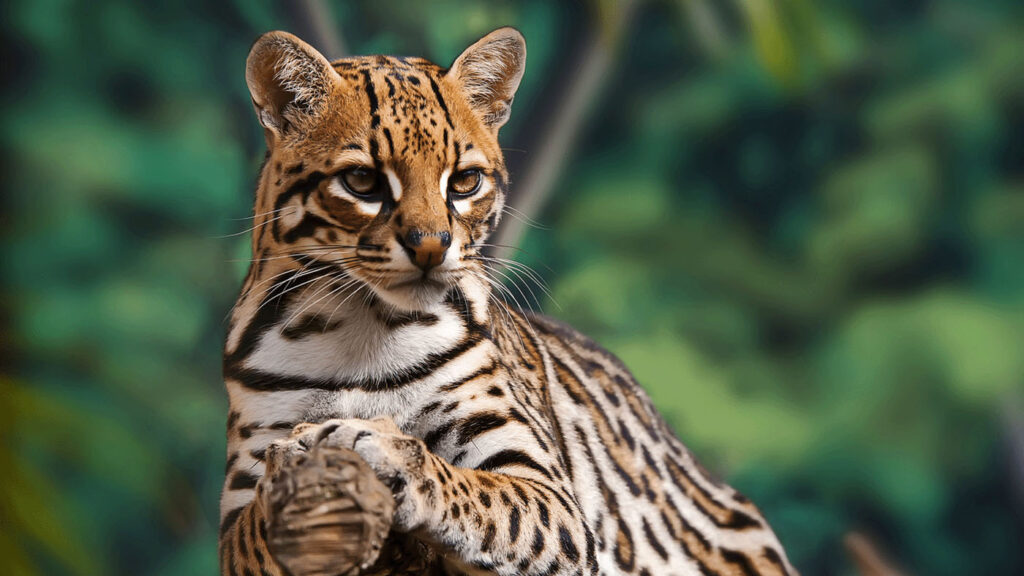
Accelerating sustainability with AI
Climate change stands as the defining challenge of our era, demanding bold and immediate action. In step with the UN Sustainable Development Goals, we empower decision-makers with reliable climate data, accelerating the clean energy revolution by mapping solar and wind installations. Meanwhile, the crisis of biodiversity loss (opens in new tab) looms just as large—wildlife populations have plummeted by 70% since 1970, according to the World Wildlife Fund. In the Amazon, deforestation endangers countless species. Harnessing the power of AI, we analyze satellite images, track animal behavior, and decode forest sounds to arm scientists with the tools to protect biodiversity more effectively. By sharing our innovations and insights, we strive to pave the way for a sustainable, thriving planet for generations to come.
Innovations in measurements and action

Mapping the planet to clean energy
Global renewable energy transition requires accurate data on solar and wind installations. In collaboration with Partnerships: Planet and The Nature Conservancy, the Global Renewables Watch (opens in new tab) is a living atlas using AI and satellite imagery to map utility-scale solar and wind installations worldwide.

Forecasting solar panel efficiency with AI
Solar energy is a vital tool for sustainability, with panels converting sunlight into stored energy. However, photovoltaic degradation happens over time challenging solar energy development. AI for Good Lab with partners at MIT developed AI tools to help forecast, advance, and maximize efficiency.

AI maps and tracks glacier lakes
Understanding climate change in regions sensitive to environmental shifts is crucial. Glacial lakes, formed by glacier retreat, pose threats when excessive melting leads to floods downstream. The AI for Good Lab collaborated with ICIMOD to leverage mapping and automation to enhance flood risk.
“You can’t solve a problem if you can’t measure it. Using AI tools, we can actually start measuring the problem.”
– Juan M. Lavista Ferres, CVP and Chief Data Scientist, Microsoft
A collective responsibility to protecting our planet

AI-powered conservation for the Amazon
Deforestation threatens the health of our planet, with the Amazon losing nearly 2 million hectares in 2022 alone. Project Guacamaya, in partnership with Humboldt Institute, uses AI solutions: satellite analysis detects illegal deforestation, camera traps streamline wildlife monitoring, and bioacoustics aid species identification.

Human needs & wildlife conservation
In Kenya’s Maasai Mara, population expansion and resource scarcity threaten the delicate balance of biodiversity. Accurate mapping of conflict zones is crucial for targeted interventions. With AI and expertise from Smithsonian and Kenya Wildlife Trust, sustainable coexistence is achievable.

Sustainable tourism with AI
Amidst climate change, island nations turn to the blue economy for sustainable ocean resource management. With The Nature Institute our AI-driven approach in the Eastern Caribbean maps tourist activities, turning tourism into a sustainable economic driver while preserving natural resources.
“We need to be using technology and innovation to think outside of the box, we have powerful tools at hand to promote change in society.”
– Diego Ochoa, Alexander von Humboldt Institute
Preserving our natural heritage through wildlife conservation

Giraffe social dynamics in the face of change
Environmental changes affect animal habitats and behaviors, impacting reproductive success. Our collaboration with Wild Nature Institute uncovers male giraffe dispersal patterns and social structures shaped by landscape features, crucial for assessing endangered Masai giraffe populations.

Monitoring whale populations with satellites
Climate change and human impacts threaten marine biodiversity, with whales serving as vital indicators of ocean health. The Geospatial Artificial Intelligence for Animals (GAIA) initiative uses high-resolution satellite imagery and an active learning process to identify whale species efficiently.

Pytorch-Wildlife empowers collaboration
Pytorch-Wildlife serves as a versatile platform for developing and sharing AI conservation models, from camera traps and overhead images to bioacoustics. Achieving meaningful progress in conservation demands collective action and engagement.
